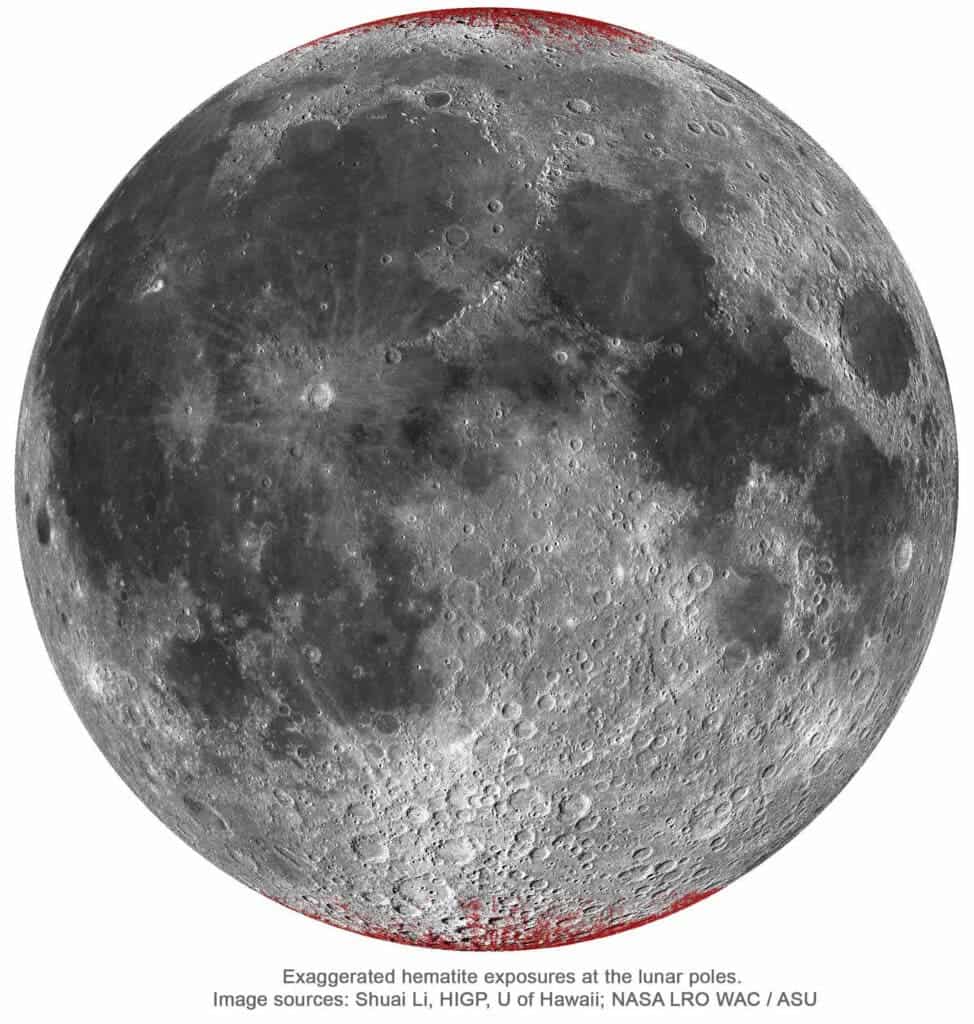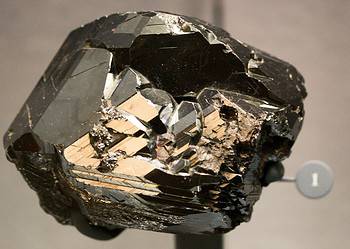With a virtually non-existent atmosphere and no liquid water, you’d think the moon would be the last place you’d find hematite — basically rusted iron that requires the presence of both iron and water. But that’s exactly what researchers have recently discovered at high latitudes on the moon.

The reddish dust we all know as rust is essentially a chemical product of the reaction between iron and oxygen. It’s very common on Earth (you can find iron oxides almost everywhere) but since there is no oxygen on the moon, you wouldn’t really expect any hematite. In fact, sample return missions during the Apollo era and subsequent satellite observations have only been able to find pristine metallic iron devoid of any sign of rust.
However, when planetary scientist Shuai Li of the University of Hawaii at Manoa was examining spectral data from NASA’s Moon Mineralogy Mapper (M3), as well as from the Chandrayaan-1 orbiter operated by the Indian Space Research Organization, he noticed signatures typical of hematite.
“When I examined the M3 data at the polar regions, I found some spectral features and patterns are different from those we see at the lower latitudes or the Apollo samples,” said Li in a statement. “I was curious whether it is possible that there are water-rock reactions on the Moon. After months of investigation, I figured out I was seeing the signature of hematite.”
Researchers had quite a mystery on their hands. Hematite requires both water and oxygen to form. For water, researchers had a hunch. Hematite was most abundant at the lunar poles, where there’s also ice water. But what about the oxygen — where could that come from?
Here too, geography might hold the answer. According to the data analyzed by Li and colleagues, most of the hematite on the lunar surface seems to be distributed on the lunar nearside, which always faces Earth. So the likely culprit was Earthly oxygen.
“This reminded me of a discovery by the Japanese Kaguya mission that oxygen from Earth’s upper atmosphere can be blown to the lunar surface by solar wind when the Moon is in Earth’s magnetotail. So, Earth’s atmospheric oxygen could be the major oxidant to produce haematite,” Li said.

That’s not to say that hematite is absolutely absent from the far-side of the moon — it’s just that much fewer oxidative events were seen there, the researchers added.
“The tiny amount of water observed at lunar high latitudes may have been substantially involved in the haematite formation process on the lunar far-side, which has important implications for interpreting the observed haematite on some water poor S-type asteroids,” Li said.
Scientists may be able to learn more about how exactly oxidation occurs on the moon when NASA’s ARTEMIS mission return hematite samples from the polar regions. Beyond confirming the source of oxidation for lunar minerals, the sampled hematite could still retain oxygen isotopes from Earth’s ancient atmosphere. This way, scientists can learn more about our planet’s history.
“This discovery will reshape our knowledge about the Moon’s polar regions,” said Li. “Earth may have played an important role on the evolution of the Moon’s surface.”
The findings appeared in the journal Science Advances.






